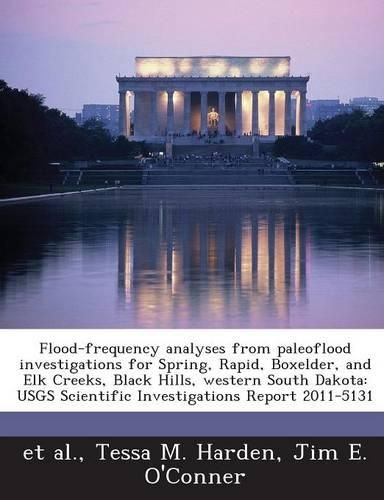Readings Newsletter
Become a Readings Member to make your shopping experience even easier.
Sign in or sign up for free!
You’re not far away from qualifying for FREE standard shipping within Australia
You’ve qualified for FREE standard shipping within Australia
The cart is loading…






Flood-frequency analyses for the Black Hills area are important because of severe flooding of June 9-10, 1972, that was caused by a large mesoscale convective system and caused at least 238 deaths. Many 1972 peak flows are high outliers (by factors of 10 or more) in observed records that date to the early 1900s. An efficient means of reducing uncertainties for flood recurrence is to augment gaged records by using paleohydrologic techniques to determine ages and magnitudes of prior large floods (paleofloods). This report summarizes results of paleoflood investigations for Spring Creek, Rapid Creek (two reaches), Boxelder Creek (two subreaches), and Elk Creek. Stratigraphic records and resulting long-term flood chronologies, locally extending more than 2,000 years, were combined with observed and adjusted peak-flow values (gaged records) and historical flood information to derive flood-frequency estimates for the six study reaches. Results indicate that (1) floods as large as and even substantially larger than 1972 have affected most of the study reaches, and (2) incorporation of the paleohydrologic information substantially reduced uncertainties in estimating flood recurrence.
$9.00 standard shipping within Australia
FREE standard shipping within Australia for orders over $100.00
Express & International shipping calculated at checkout
Flood-frequency analyses for the Black Hills area are important because of severe flooding of June 9-10, 1972, that was caused by a large mesoscale convective system and caused at least 238 deaths. Many 1972 peak flows are high outliers (by factors of 10 or more) in observed records that date to the early 1900s. An efficient means of reducing uncertainties for flood recurrence is to augment gaged records by using paleohydrologic techniques to determine ages and magnitudes of prior large floods (paleofloods). This report summarizes results of paleoflood investigations for Spring Creek, Rapid Creek (two reaches), Boxelder Creek (two subreaches), and Elk Creek. Stratigraphic records and resulting long-term flood chronologies, locally extending more than 2,000 years, were combined with observed and adjusted peak-flow values (gaged records) and historical flood information to derive flood-frequency estimates for the six study reaches. Results indicate that (1) floods as large as and even substantially larger than 1972 have affected most of the study reaches, and (2) incorporation of the paleohydrologic information substantially reduced uncertainties in estimating flood recurrence.